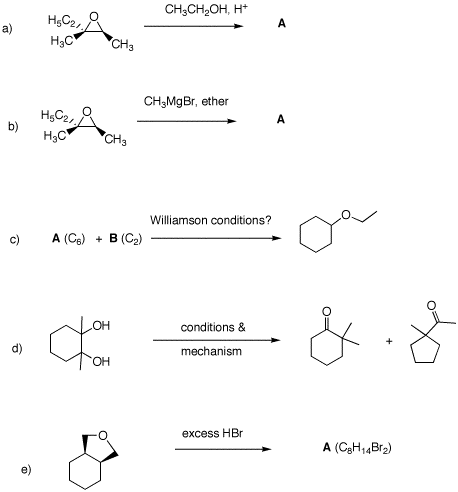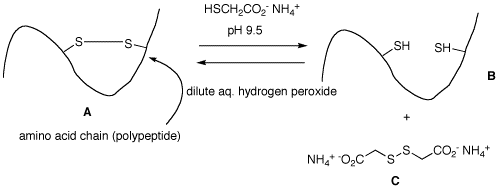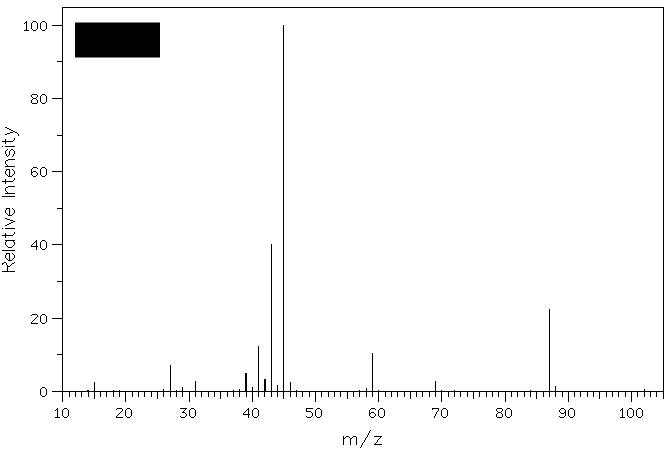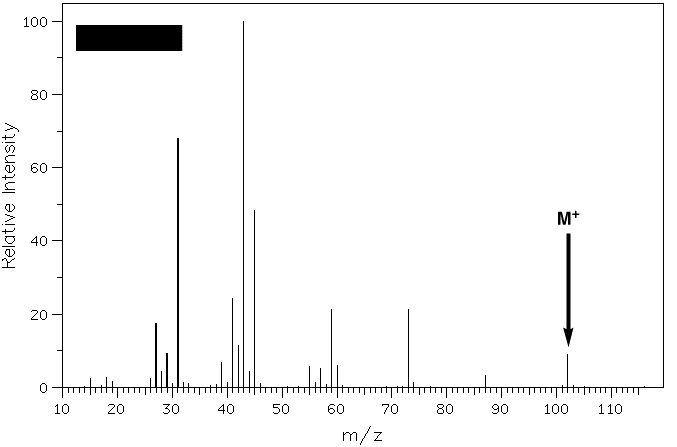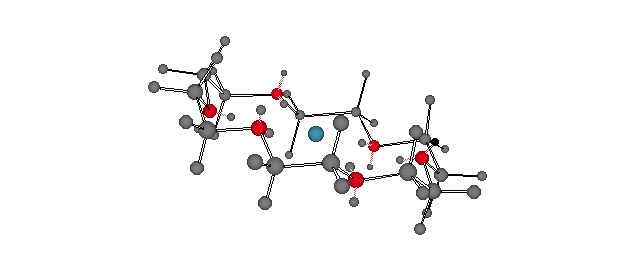
|
|
1. In the following problems, provide the missing information. Provide explanations for your choices.
|
|
2. Cartoon A represents the cross-linking a disulfide bond in hair. This property gives hair its natural curl or an artificial "permanent wave". When a solution of ammonium thioglycolate at alkaline pH is applied to the hair, it goes straight to form a dithiol (cartoon B) and disulfide C, which is water soluble and is rinsed away. To restore the curl, the hair is washed with a mild oxidant. Provide a mechanism for the formation of B and C from A, and the formation of A from B.
|
|
3. Compounds A and B are constitutionally, isomer ic ethers (see spectra). Compound A cannot be prepared by the Williamson method. Compound B can be prepared only one way by the Williamson method and conveniently by classical acid catalysis. a) What are the structures of A and B? Explain the how the spectra distinguish them. b) Show how you would best prepare the mixed ether C that is related to A and B. Spectrum A: (larger
version) Spectrum B: (larger
version) |
|
4. Design three independent syntheses of 4-ethyl-4-octanol using three different disconnections. Your sources of carbon contained in the product are limited to ethanol, ethylene oxide and gaseous formaldehyde. All other reagents are available to you. What can you say about the the optical rotation of 4-ethyl-4-octanol in each of your syntheses? |
|
5. A chemist converts (S)-epichlorohydrin (1) into compound 3 into successive chemical reactions. The two sets of reagents are: i) isobutylamine; ii) thiophenol/aq. NaOH. a) Which reagents are used in each of the two steps? b) What is the structure of 2? c) What is the configuration of 2, if any? d) Write mechanisms for the two reactions. e) How do you account for the change in CIP designation? |
 |
